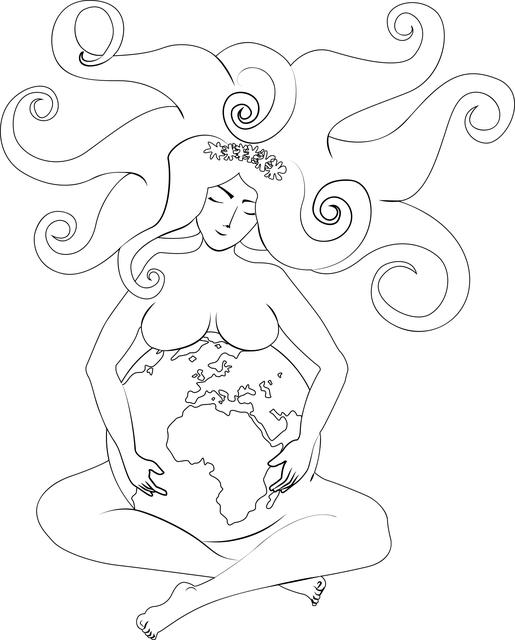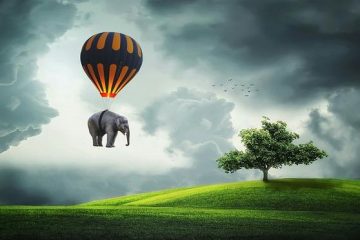Table of Contents
- Exploring the Foundations of Gaia Theory and Its Impact on Environmental Science
- James Lovelocks Vision: The Intersection of Science and Philosophy
- The Role of Feedback Mechanisms in the Gaia Hypothesis
- Practical Applications of Gaia Theory in Contemporary Ecology
- Reflecting on the Legacy of James Lovelock and the Future of Gaia Research
- Q&A
- Key Takeaways

Exploring the Foundations of Gaia Theory and Its Impact on Environmental Science
At the heart of Gaia theory lies the revolutionary idea that Earth functions as a single, self-regulating system. Proposed by James Lovelock in the 1970s, this concept redefines our understanding of the interconnectedness within ecological processes. Instead of viewing organisms as separate entities competing for resources, Gaia theory promotes the notion that living organisms and their inorganic surroundings are intricately linked, collaborating to maintain conditions suitable for life. This perspective invites a more holistic approach to environmental science, emphasizing the importance of biodiversity and the interdependencies of ecosystems.
One significant impact of Gaia theory on environmental science is its advocacy for a systems-based approach to ecological research and conservation. By interpreting the Earth as a dynamic system, scientists and policymakers have begun to prioritize the relationships and feedback loops between various components of the environment. This framework has led to a deeper understanding and appreciation of phenomena such as climate change, nutrient cycling, and the resilience of ecosystems. Researchers can now explore how alterations in one component—such as increased carbon emissions—can cascade through the system, affecting everything from species extinction to weather patterns.
| Key Concepts | Impact on Environmental Science |
|---|---|
| Self-Regulation | Encourages the study of ecosystems’ adaptative capacities. |
| Interconnectedness | Promotes collaborative conservation efforts. |
| Biodiversity | Highlights the necessity of preserving diverse species for ecosystem stability. |
Furthermore, Gaia theory has spurred an array of interdisciplinary collaborations, merging insights from biology, Earth sciences, and even philosophy. Scientists and environmentalists now leverage its principles to craft strategies aimed at mitigating ecological crises, such as habitat destruction and climate disruption. By framing environmental challenges as interconnected problems rather than isolated issues, the theory fosters a more comprehensive understanding of ecological health and sustainability. Ultimately, it encourages a shift in human perspective—recognizing that we are not merely inhabitants of Earth but crucial participants in its ongoing health and vitality.
James Lovelocks Vision: The Intersection of Science and Philosophy
James Lovelock’s theory of Gaia introduces an intricate interplay between the realms of science and philosophy, suggesting that life on Earth is an interconnected system where organisms interact with their inorganic surroundings. This revolutionary perspective emphasizes that living organisms both shape and are shaped by the environment. Lovelock proposed that the Earth’s biosphere functions as a self-regulating entity, which raises profound questions about humanity’s role within this complex web of life and the ethical implications of our actions. By conceptualizing the planet as a living organism, he invites us to reflect on how we relate to the environment and each other.
At the heart of Lovelock’s vision lies the idea that humanity must adopt a more holistic perspective in order to address the pressing challenges of climate change and ecological degradation. His insights bridge significant gaps between scientific inquiry and philosophical contemplation, urging a rethink of anthropocentrism. This aligns with contemporary movements in environmental philosophy that advocate for deeper spiritual and ethical connections to the Earth. By recognizing the interdependence between all forms of life, we are encouraged to consider the consequences of our actions not merely through a scientific lens, but also through one that acknowledges moral and philosophical dimensions.
Reflecting on Lovelock’s contributions reveals a tapestry of concepts that invite discussion on sustainability and our collective future. His work resonates with several essential themes, including:
- Interconnectedness: Understanding that everything is linked within the ecosystem.
- Self-Regulation: The ability of natural systems to maintain stability.
- Responsibility: The moral obligation to act in ways that support ecological health.
| Concept | Implication |
|---|---|
| Interconnectedness | Fosters environmental stewardship. |
| Self-Regulation | Encourages sustainable practices. |
| Responsibility | Promotes ethical decision-making. |

The Role of Feedback Mechanisms in the Gaia Hypothesis
The Gaia Hypothesis posits that Earth functions as a single, self-regulating organism, with various biological and physical components interacting through intricate feedback mechanisms. These interactions ensure that the planet maintains conditions conducive to life. Central to Lovelock’s argument is the idea that living organisms actively participate in the regulation of their environment, resulting in a delicate balance that sustains life across diverse ecosystems.Key feedback mechanisms include:- Metabolic processes: Organisms release gases such as oxygen and carbon dioxide, directly influencing climate and atmospheric composition. For example, plants engage in photosynthesis, absorbing carbon dioxide and releasing oxygen, which in turn affects global temperature and humidity.
- Soil and mineral interactions: Microorganisms play a crucial role in soil formation and nutrient cycling. Their activities help regulate the availability of essential minerals, thereby impacting plant growth and overall ecosystem productivity.
- Temperature regulation: The earth’s surface albedo, or reflectivity, is influenced by vegetation and water bodies. Changes in land cover can affect heat absorption and precipitation patterns, creating feedback loops that can either mitigate or exacerbate climate fluctuations.
| Feedback Mechanism | Description | Impact on Earth |
|---|---|---|
| Carbon Cycle | Regulates atmospheric CO2 levels through photosynthesis and respiration. | Maintains climate stability. |
| Water Cycle | Involves evaporation, precipitation, and transpiration. | Supports life and redistributes heat. |
| Nutrient Cycle | Cyclic movement of nutrients like nitrogen and phosphorus. | Promotes soil fertility and plant growth. |

Practical Applications of Gaia Theory in Contemporary Ecology
Gaia Theory, proposed by James Lovelock in 1979, presents a paradigm shift in understanding ecological interconnectivity. It suggests that Earth functions as a self-regulating system, where biological processes actively contribute to the stability and resilience of the planet’s environment. This perspective has profound implications for contemporary ecology, emphasizing the importance of maintaining biodiversity and the intricate relationships between organisms and their surroundings. Practically, this translates into conservation efforts that prioritize ecosystem health over individual species preservation.
One practical application of Gaia Theory can be seen in restoration ecology, where ecological scientists and environmentalists utilize the principles of complex, interconnected systems to enhance habitat recovery. Techniques such as re-wilding or encouraging natural succession restore ecological balance, allowing for the recovery of entire ecosystems rather than isolated entities. This method values the “whole” over the “parts,” underscoring the necessity of holistic approaches for effective ecological restoration.
Moreover, Gaia Theory influences modern environmental policies, particularly in addressing climate change. By adopting a systems-thinking approach, policymakers can develop strategies that not only mitigate harmful impacts but also enhance the earth’s self-regulatory processes. Effective policy may include:
- Strengthening local and indigenous knowledge to foster sustainable resource management.
- Promoting urban green spaces that increase biodiversity and reduce carbon footprints.
- Implementing circular economy practices aimed at reducing waste and sustaining ecological systems.

Reflecting on the Legacy of James Lovelock and the Future of Gaia Research
James Lovelock’s contribution to environmental science is monumental, particularly through his introduction of the Gaia hypothesis in 1979. This concept suggests that Earth functions as a self-regulating entity, with biological and non-biological components working synergistically to maintain conditions conducive to life. Lovelock’s vision challenges traditional scientific paradigms, prompting researchers to reevaluate the interconnectedness of ecosystems. His insights reverberate through contemporary climate discussions, influencing a broad spectrum of disciplines, from ecology to philosophy.
As we reflect on Lovelock’s legacy, it becomes clear that Gaia research has evolved into a critical field, shedding light on the complex relationships between organisms and their environments. The implications of this framework have informed discussions on climate change, biodiversity, and sustainability. Key areas of impact include:
- Understanding the feedback loops in climate systems.
- Exploring the role of microorganisms in global nutrient cycles.
- Assessing human impacts on ecological balances.
Looking to the future, Gaia research is poised to tackle unprecedented challenges facing our planet. With technology advancing rapidly, we have the opportunity to harness data in ways Lovelock could only imagine. Tools such as artificial intelligence and remote sensing can enhance our understanding of Earth’s systems. Emerging research focuses on:
| Research Area | Focus |
| Climate Resilience | Strategies for adapting to climate change impacts. |
| Ecological Restoration | Methods to revive degraded ecosystems. |
| Interdisciplinary Approaches | Integrating social sciences into environmental strategies. |
These areas not only reflect the core principles of Lovelock’s original theory but also expand upon them, proposing innovative solutions to safeguard our planet for future generations.



0 Comments